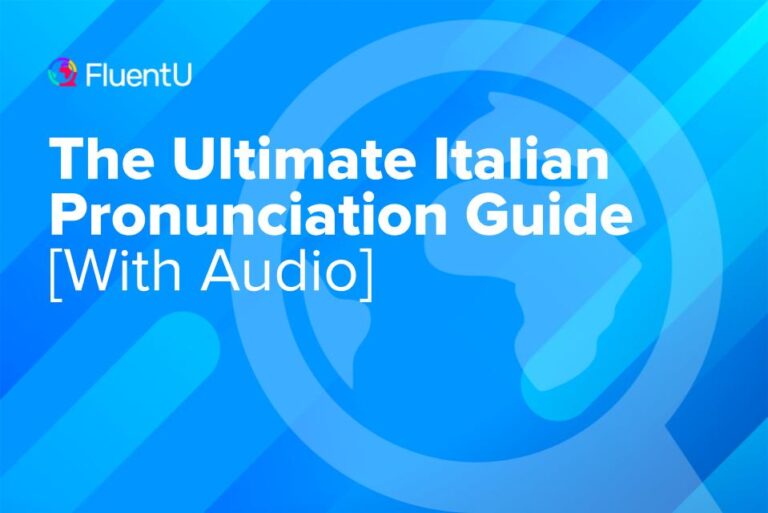“To Be” in Italian: The Simple Guide to Conjugating Essere
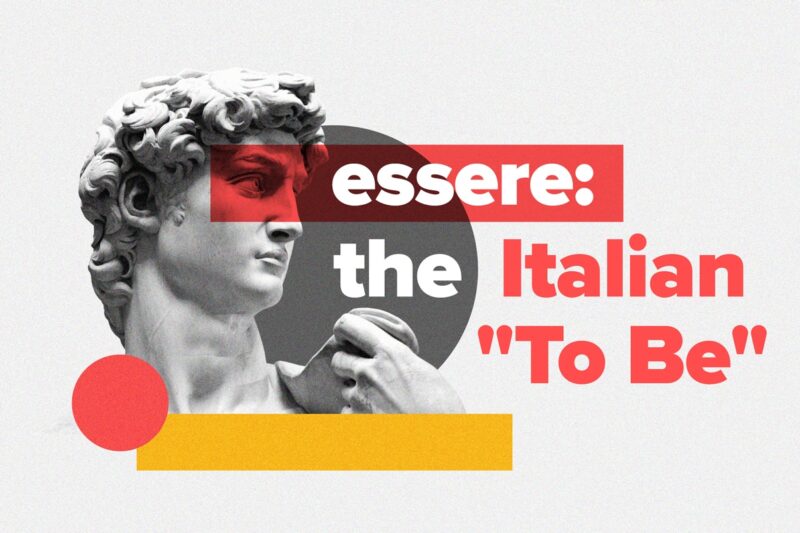
Essere is an Italian verb meaning “to be” or “to exist”. Learning the conjugations of essere immediately gives you the ability to create simple sentences, such as “I am American” or “What time is it?”
You also need it to say where you’re from or to express possession. Essere also functions as an auxiliary verb in compound tenses, so you can talk about events beyond the present tense.
Clearly, knowing how to use “to be” in Italian is essential learning if you want to become fluent.
Below is a quick and simple guide with conjugations, common expressions, tips and more to get you started!
Download: This blog post is available as a convenient and portable PDF that you can take anywhere. Click here to get a copy. (Download)
The Present, Imperfect and Future Conjugations of Essere
Learning the conjugations of essere happens in the first few pages of any Italian textbook, and there’s no way to get around it. Luckily, as far as grammar goes, it’s fairly straightforward.
How to conjugate essere in the present tense (note that it’s an irregular verb!):
| Italian | English |
|---|---|
| Io sono | I am |
| Tu sei | You are (informal) |
| Lui è Lei è Lei è | He is She is You are (formal) |
| Noi siamo | We are |
| Voi siete | You all are |
| Loro sono | They are |
Naturally, as you progress in Italian, you’re going to want to communicate about more than what’s happening in just the present moment.
The imperfect tense, or imperfetto, is used to talk about continued actions in the past. It would be used to describe two past actions going on at the same time—instances when the words “used to” or “would” are used in English.
How to conjugate essere in the imperfect tense:
| Italian | English |
|---|---|
| Io ero | I was |
| Tu eri | You were (informal) |
| Lui era Lei era Lei era | He was She was You were (formal) |
| Noi eravamo | We were |
| Voi eravate | You all were |
| Loro erano | They were |
Next, the future simple tense, or futuro semplice, is used to express what will happen in the future.
While in English we would use the words “will” or “going to,” Italian requires the verb essere to be conjugated. Notice how all the conjugations start with the stem sar-.
How to conjugate essere in the future simple tense:
| Italian | English |
|---|---|
| Io sarò | I will be |
| Tu sarai | You will be (informal) |
| Lui sarà Lei sarà Lei sarà | He will be She will be You will be (formal) |
| Noi saremo | We will be |
| Voi sarete | You all will be |
| Loro saranno | They will be |
There are additional tenses in Italian, including the conditional tense, the subjunctive and other forms of past tenses, some of which use essere as an auxiliary verb.
Learning the conjugations of the present, imperfect and future tenses, however, is a great place to start to build up your communicative ability in the language and prepare yourself for using compound tenses.
How to Form the Negative of Essere
Now we’ll look at how to say when someone or something is not something.
To form the negative with any verb in Italian—including essere—put non before the verb. For example:
Non sono occupato oggi. (I am not busy today.)
Often in Italian, you will omit the pronoun in the sentence because the verb tells you that information. For instance, we left out the subject pronoun Io (I) above.
But what if we are using a pronoun before essere? In that case, non goes after the pronoun and before the verb.
Lei non è mia cugina. (She is not my cousin.)
Common Expressions That Use Essere
General descriptions: As noted before, the verb essere is very useful when starting to learn Italian. This is because it can lead to a lot of simple expressions, particularly in terms of describing people, objects and places.
The conjugated verb connects the subject with an attribute, like this:
Il cappello è rosso. (The hat is red.)
Il film è lungo. (The movie is long.)
To indicate place of origin: When we want to say where a person or object is from, we use the appropriate form of essere + di.
Io sono di Roma. (I am from Rome.)
Il professore è di Madrid. (The professor is from Madrid.)
To show possession: Much like in English, essere can be used in simple phrases to indicate possession.
Questa è la mia giacca. (That is my jacket.)
Questo è il gatto di Maria. (That is Maria’s cat.)
Basic Grammatical Pointers for Using Essere
- Essere is regularly irregular. While most verbs maintain their stem and change their endings based on their conjugation, this doesn’t hold true for essere (although it does maintain the same stem throughout the simple future tense).
Essere is therefore an irregular verb and often looks very different in different tenses. Unfortunately, you’ll just have to commit its conjugations to memory.
- Pronouns: take them or leave them. Unlike in English, Italian pronouns are optional, as mentioned above. The conjugation of the verb is usually enough.
In cases where the conjugation is the same (as in sono for both “I am” and “they are”), context is used to determine meaning. Often, pronouns are added in order to express an emphasis, like “Io sono stanco.” (I am tired.)
- You’ll have to decide how formal you want to be. While we don’t distinguish between forms of the second person in English, Italian speakers do. There are informal and formal ways to say “you.”
If a person is a stranger or older than you, it’s appropriate to use Lei è for “you are.” However, if you know the person fairly well or if they’re younger, you would probably use tu sei.
- Age isn’t only a number—it’s something you have. One mistake beginning learners often make is to express age the same way we do in English, with the verb “to be.”
However, in Italian, you’ll use the verb avere (to have) instead. So Italians don’t say “I am thirty years old,” but “I have thirty years” (Ho trent’anni).
Tips for Mastering “To Be” in Italian
Practice making simple sentences with adjectives
While reciting the conjugations of essere is a handy way to get them in your head (sono, sei, è…), to really get comfortable employing them in writing and speech takes a bit more effort.
As you go down the list of conjugations, put them into simple sentences using adjectives you know. Conjugating essere within the context of a sentence is a great way to increase your proficiency with the verb, as well as pick up new vocab words.
If you don’t know many adjectives in Italian, start with this list here. Feel free to choose words that sound like their English equivalent, such as ignorante, illegale, famoso.
As you’re forming your sentences, don’t forget that the endings of most adjectives change according to the gender and plurality of the subject!
Make use of Italian resources
There are a variety of resources that encourage the correct use of essere. For example, you can listen to native speakers on Forvo’s Italian pronunciation dictionary to check your pronunciation of sei or any other word.
There’s also a host of Italian podcasts, books and TV shows to expose you to the ways native Italians really use the language.
In fact, that’s exactly what the learning platform FluentU does.
FluentU takes authentic videos—like music videos, movie trailers, news and inspiring talks—and turns them into personalized language learning lessons.
You can try FluentU for free for 2 weeks. Check out the website or download the iOS app or Android app.
P.S. Click here to take advantage of our current sale! (Expires at the end of this month.)
Practice saying the conjugations out loud
Sometimes we forget what a powerful connection there is between our brains and our ears. Something about the act of saying something aloud helps us remember it better. Also, it’s a good way to build up “mouth-memory” for when you speak Italian with someone else.
Finding a learning partner can be a great way to speak Italian with someone of a similar level. It can also be a source of motivation to keep learning.

Try to practice speaking once a week or more. The more you use the Italian “to be” in your conversations, the more instinctual it will become!
Mastering a few tenses and finding ways to practice them with essere will help you communicate aspects about yourself and others while giving you a solid foundation for continuing toward fluency.
Download: This blog post is available as a convenient and portable PDF that you can take anywhere. Click here to get a copy. (Download)
And One More Thing...
If you're as busy as most of us, you don't always have time for lengthy language lessons. The solution? FluentU!
Learn Italian with funny commericals, documentary excerpts and web series, as you can see here:
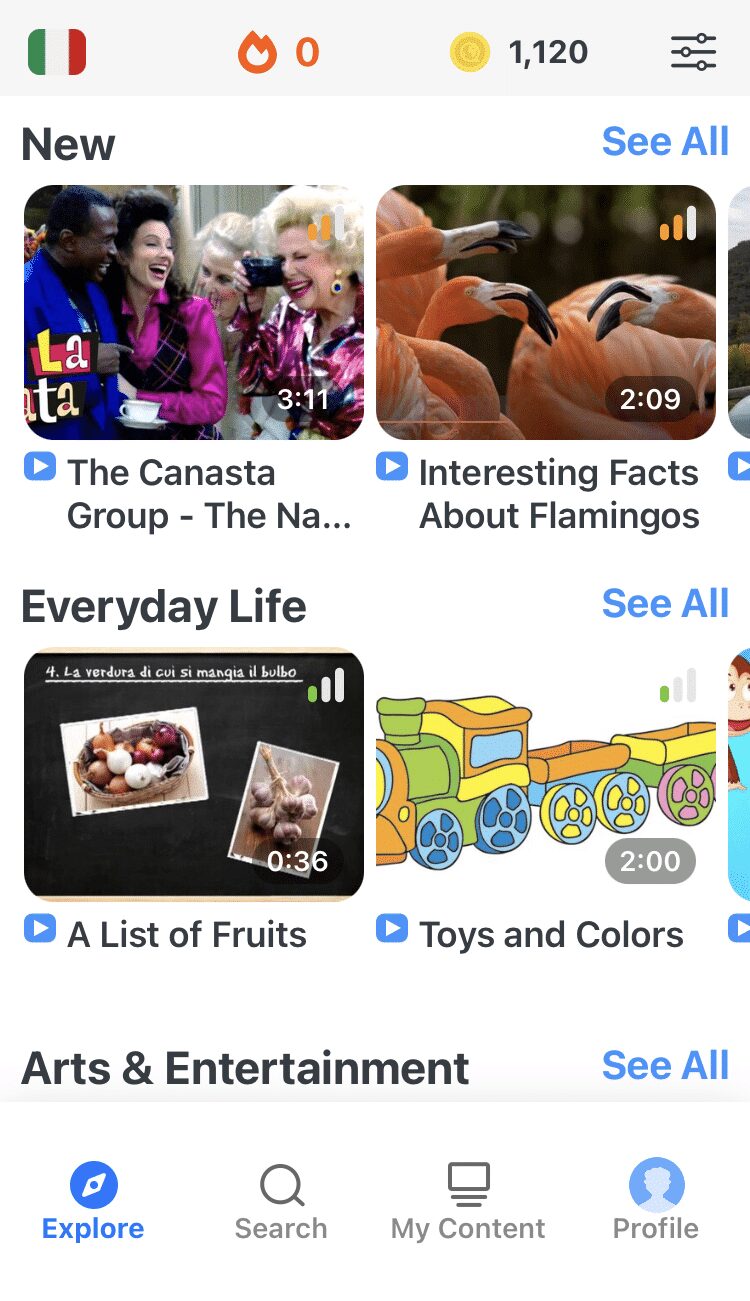
FluentU helps you get comfortable with everyday Italian by combining all the benefits of complete immersion and native-level conversations with interactive subtitles. Tap on any word to instantly see an image, in-context definition, example sentences and other videos in which the word is used.
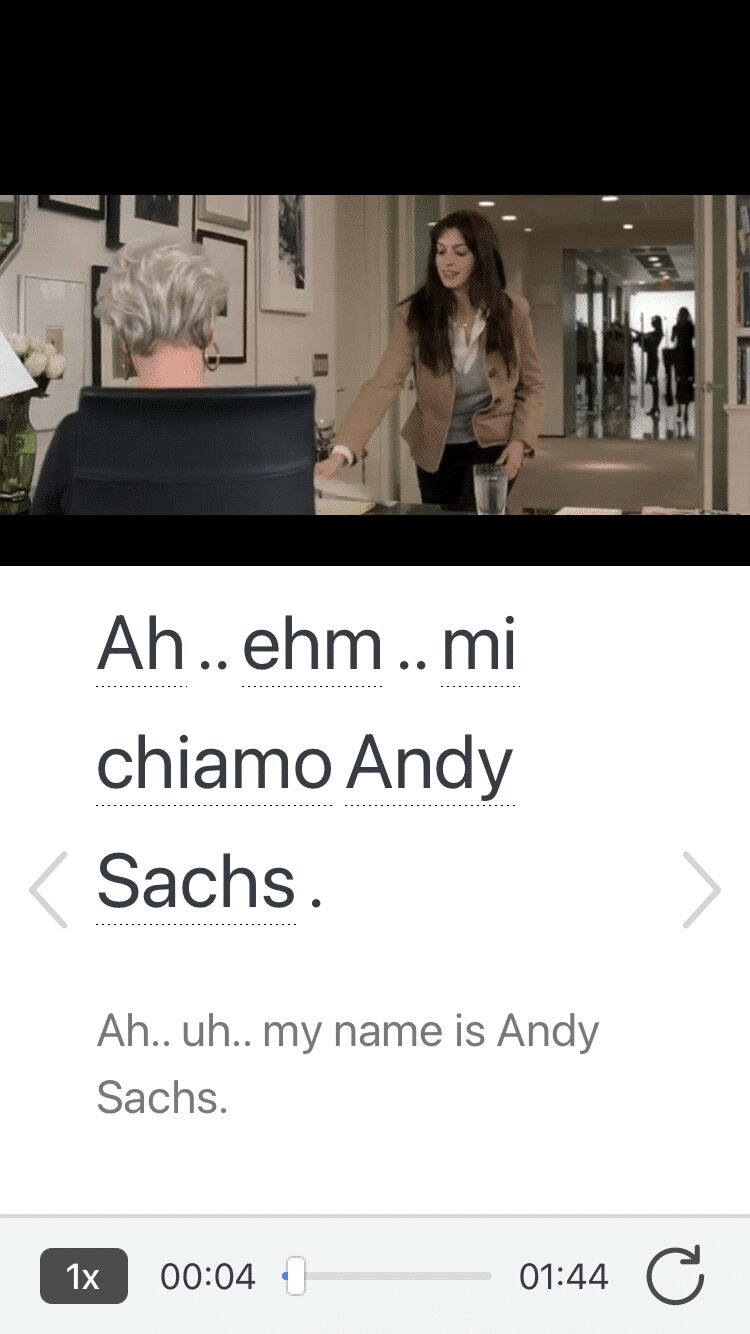
Access a complete interactive transcript of every video under the Dialogue tab, and review words and phrases with convenient audio clips under Vocab.
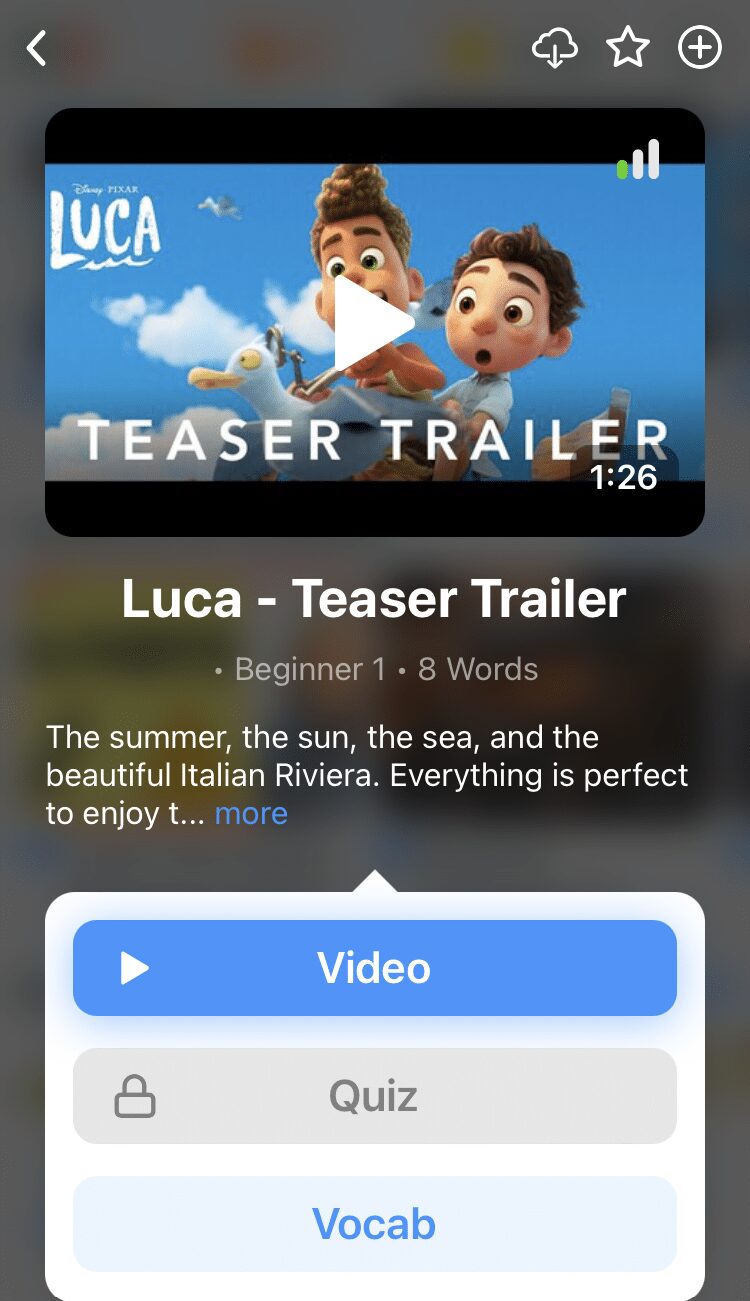
Once you've watched a video, you can use FluentU's quizzes to actively practice all the vocabulary in that video. Swipe left or right to see more examples of the word you’re on.
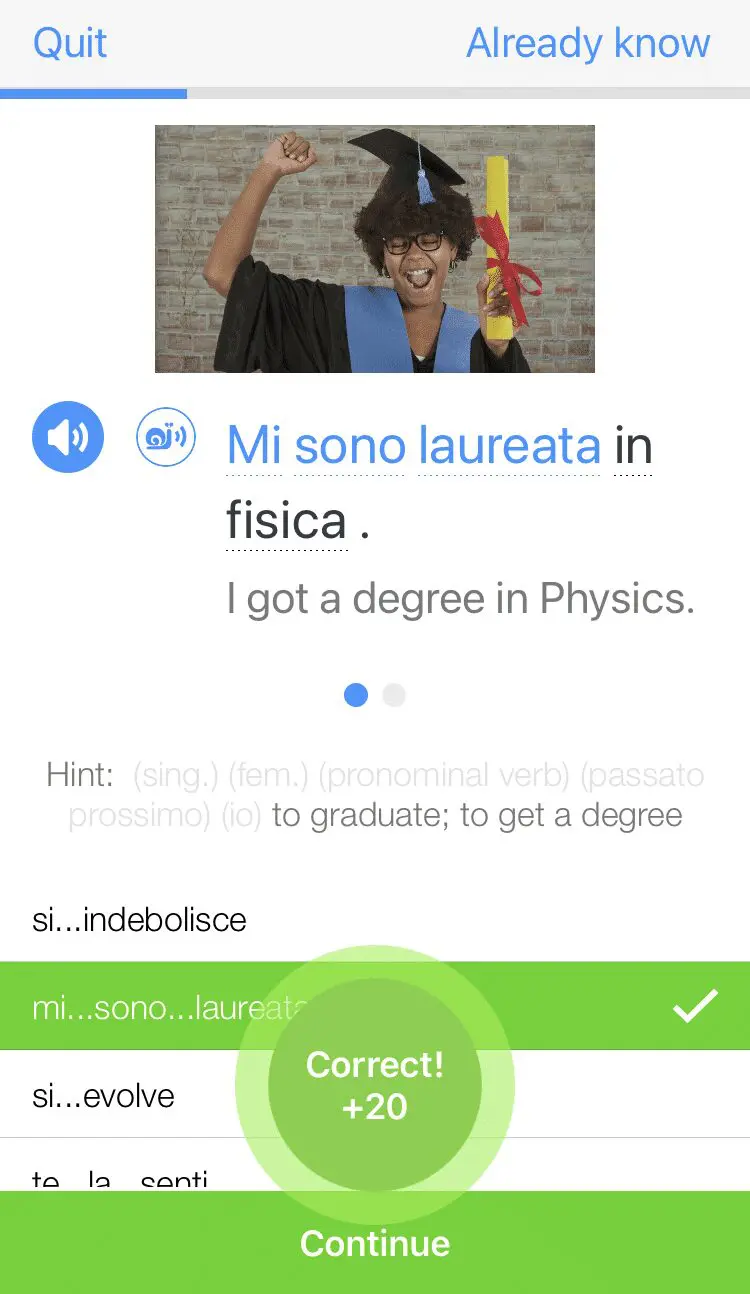
FluentU will even keep track of all the Italian words you’re learning, and give you extra practice with difficult words. Plus, it'll tell you exactly when it's time for review. Now that's a 100% personalized experience!
The best part? You can try FluentU for free with a trial.
Start using the FluentU website on your computer or tablet or, better yet, download the FluentU app from the iTunes or Google Play store. Click here to take advantage of our current sale! (Expires at the end of this month.)



